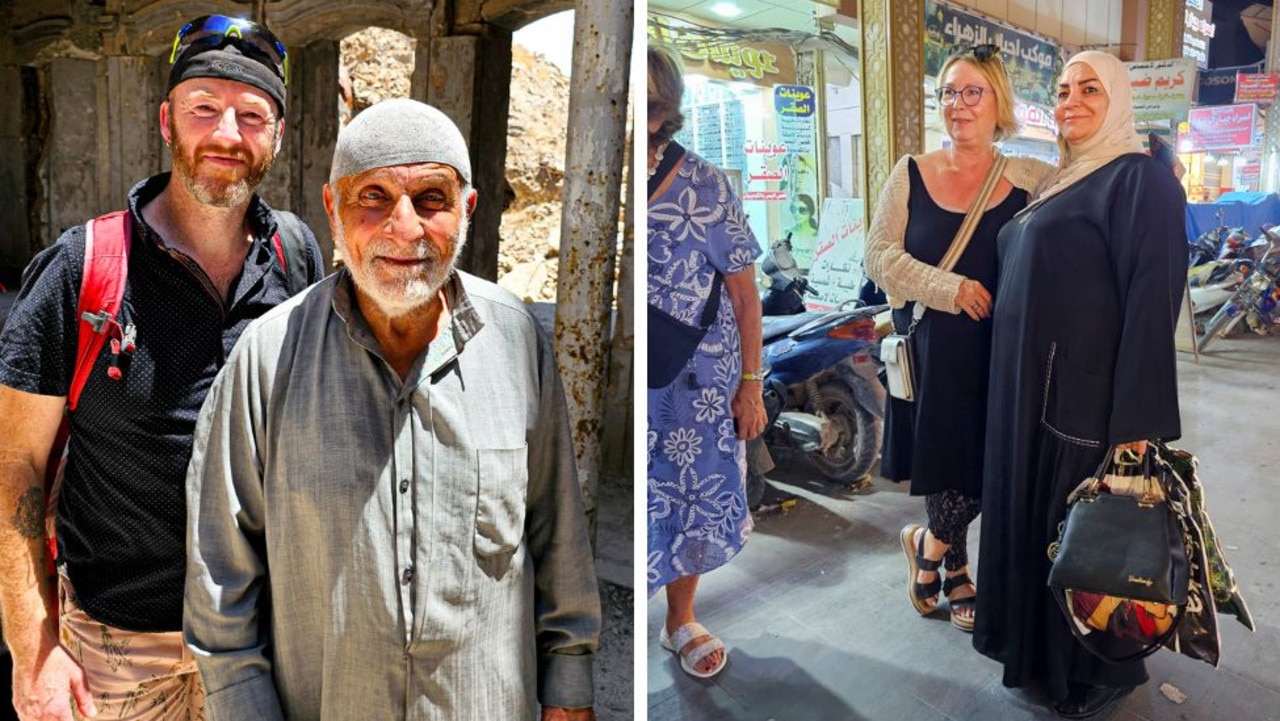Inside Maboneng, the neighbourhood that went from super dangerous to seriously cool
This inner-city street in a troubled neighbourhood was so dangerous, almost everyone deserted it. This is what we found when we visited.
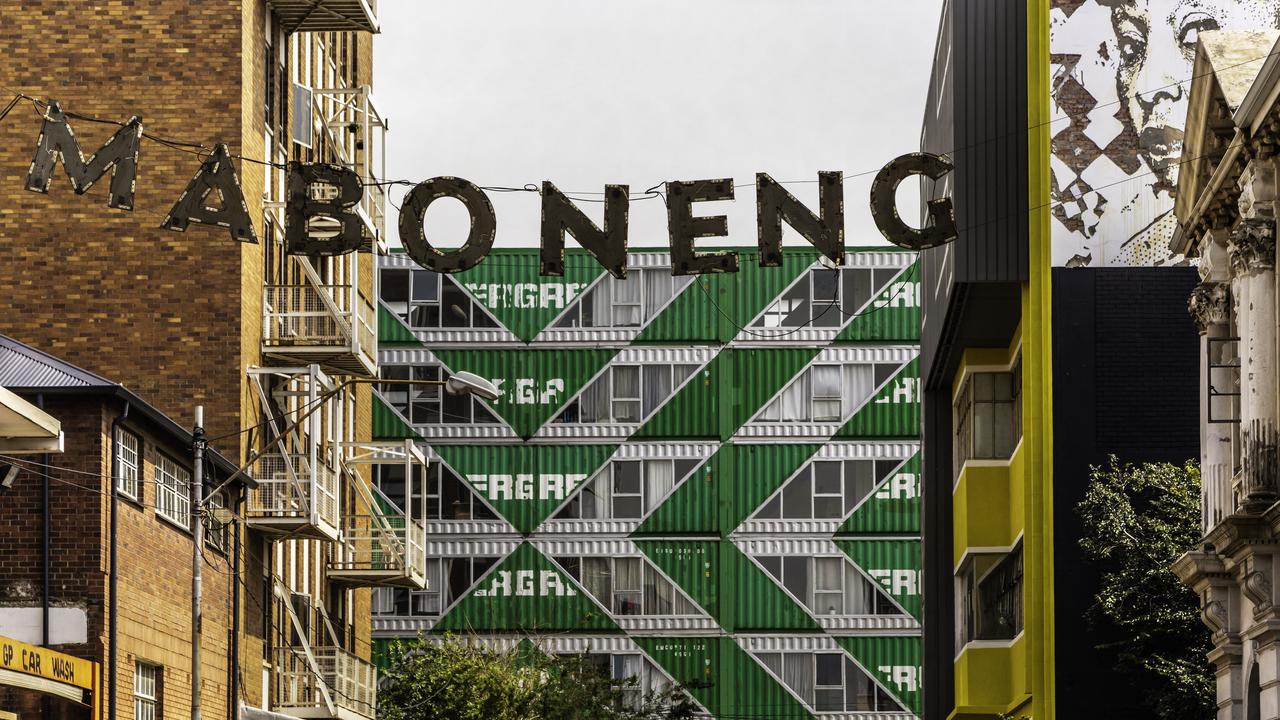
Fox Street in downtown Johannesburg was not a place you’d walk at night.
You wouldn’t risk it during the day, either.
In the turbulent final years of apartheid, as crime rates skyrocketed through the South African city, this street in particular was a no-go zone.
Muggings and violent car jackings were virtually guaranteed. Businesses fled for safer enclaves in the city’s north. Factories were abandoned, squatters moved in, locals steered clear, and the former industrial area descended into an inner-city wasteland.
Then, suddenly, it sprang back to life.
Today, this precinct — now called Maboneng, a Setho word meaning “place of light” — buzzes with the kind of formerly gritty, now cool energy of Sydney’s Redfern, or London’s Shoreditch, or New York’s Williamsburg. The main drag, Fox Street — a place once feared by locals — is now a place to see and be seen.

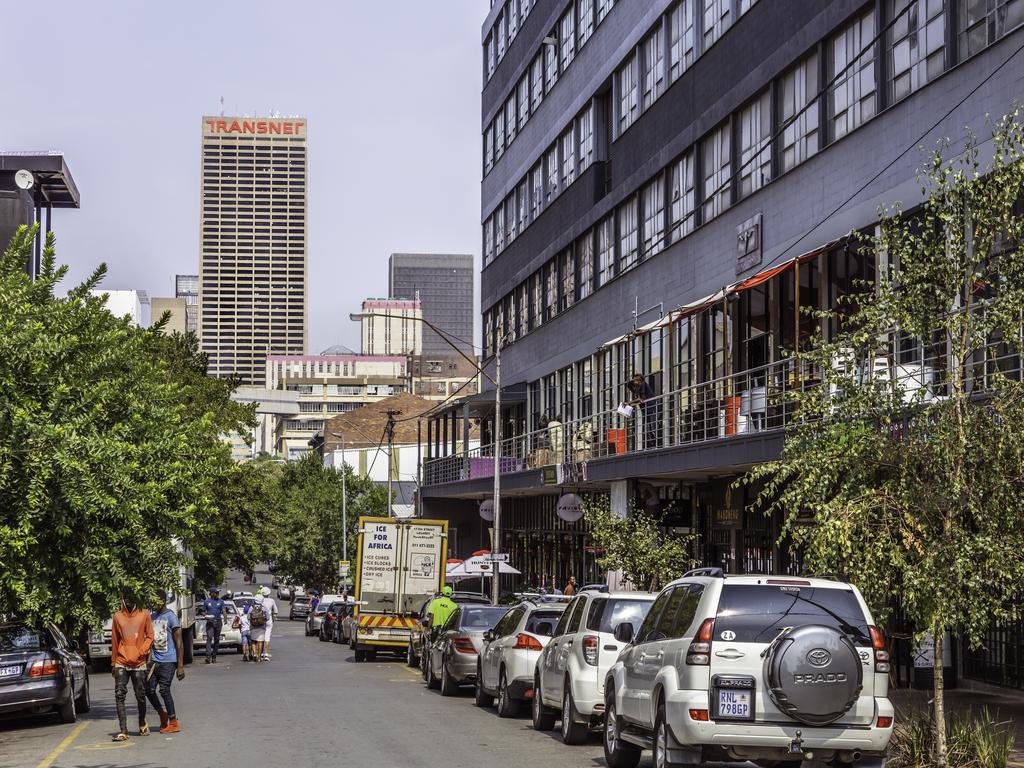
The transformation of Maboneng began a decade ago, when visionary young developer Jonathan Liebmann and his company, Propertuity, transformed a decaying, early-20th century Fox Street warehouse into Arts on Main, a creative hub of art galleries, studios and designer boutiques.
From there, gentrification rippled through the neighbourhood. The artists moved in. And the hip cafes. And the rooftop bars and the record stores and the young professionals who snapped up apartments in redeveloped buildings. One of those buildings, the uber-chic Revolution House, had been a secret meeting spot for members of the African National Congress when it was banned during apartheid.
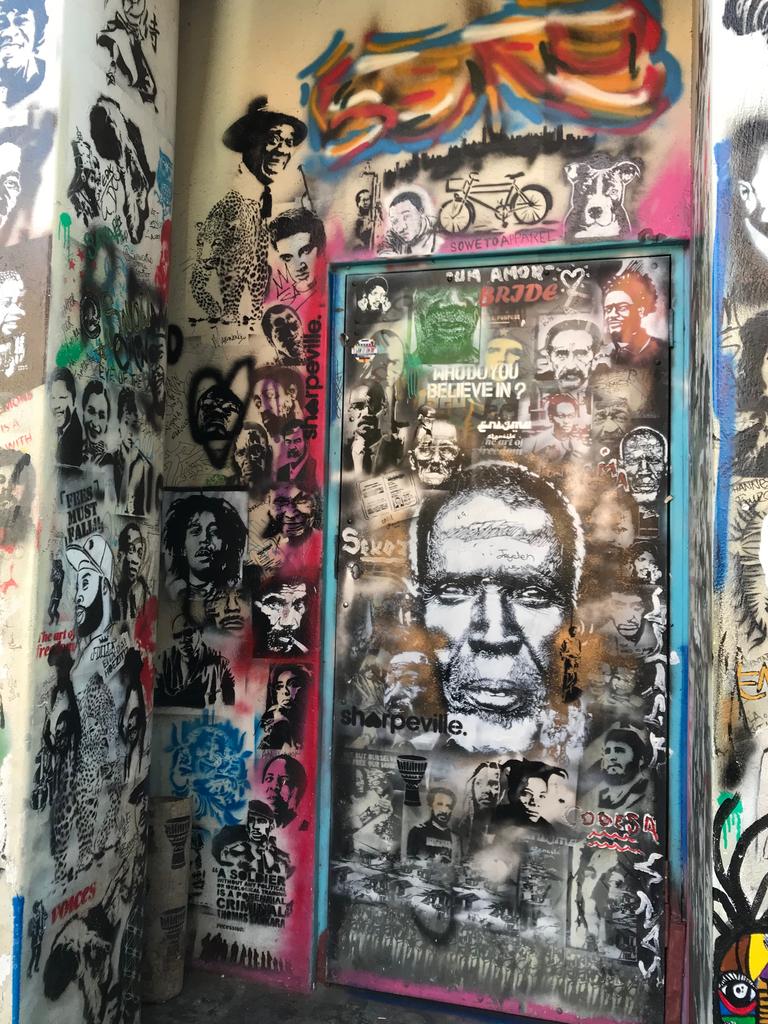
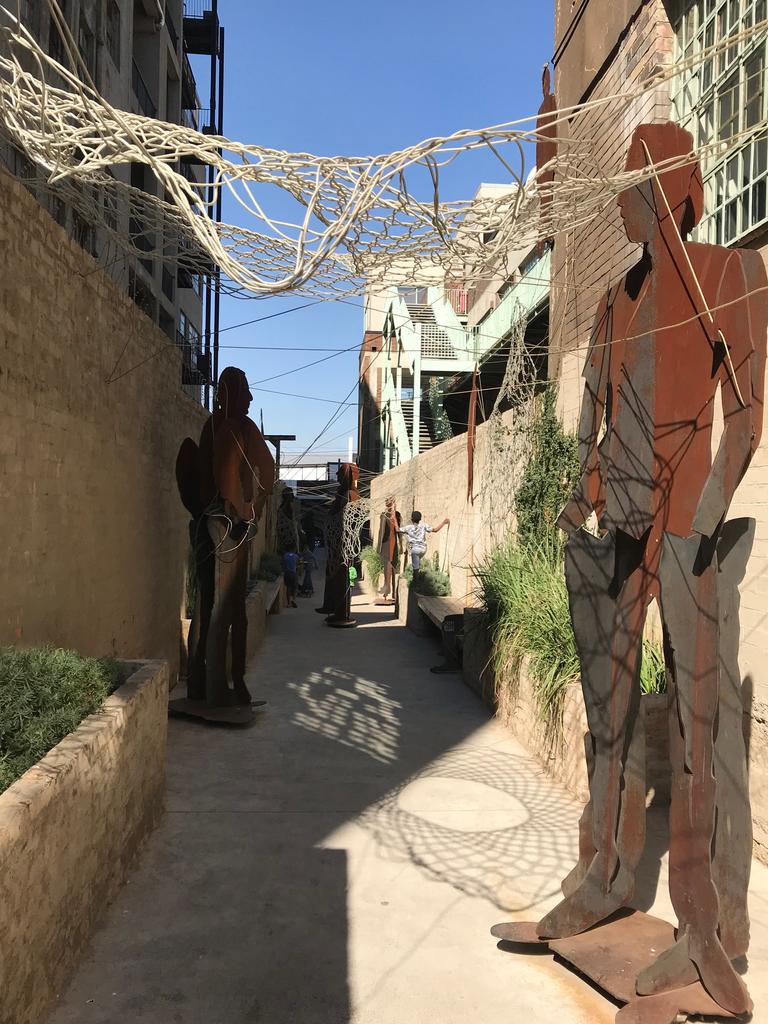
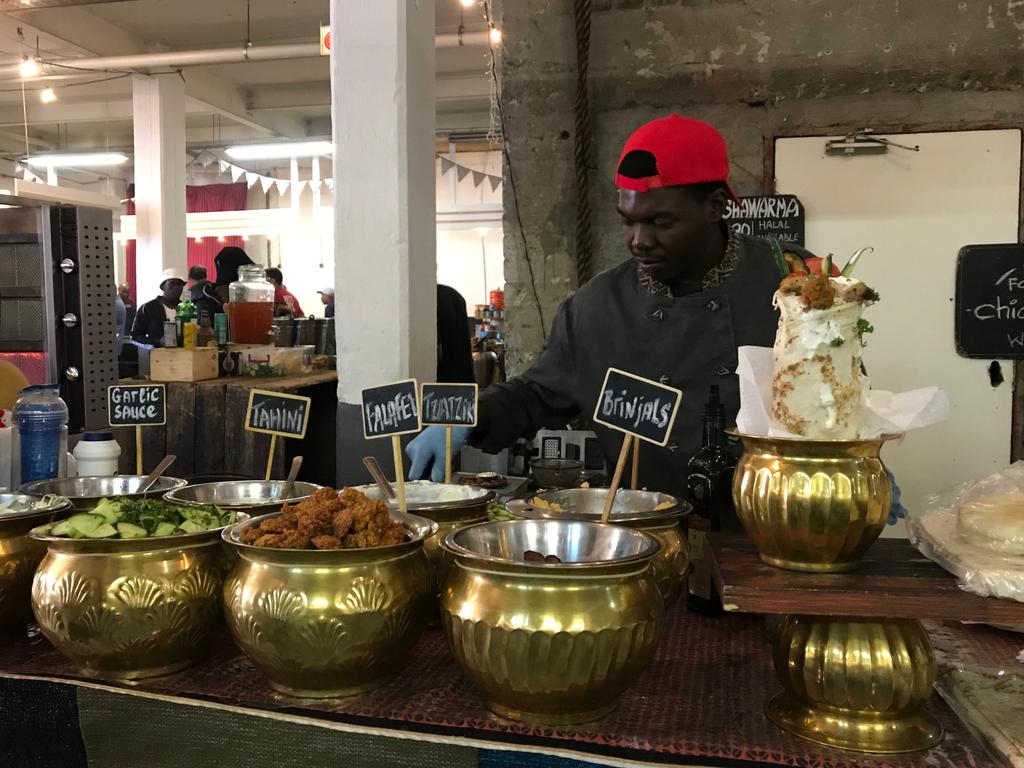
Last year, Forbes named Maboneng one of the world’s 12 coolest suburbs. But Liebmann’s urban renewal project — estimated at about $72 million — was an ambitious one, not least because the area had a long-held infamy among locals.
“We all had heard that this part of Joburg was dangerous and some of us were a little uneasy,” former Maboneng resident Lionel Skink told news.com.au.
Mr Skink, who now lives in the nearby suburb of Malvern, first saw the change in Maboneng in 2009, when Arts on Main opened, and he moved in.
“It was a big year for South Africa and just before we hosted the FIFA World Cup. So there were a lot of events being hosted in and around the city,” he said.
“Back then, Arts on Main was one of the popular venues. Many people, including me, liked the backdrop of the Joburg skyline. Especially because not many events were held in the inner city. It was something of a novelty.”
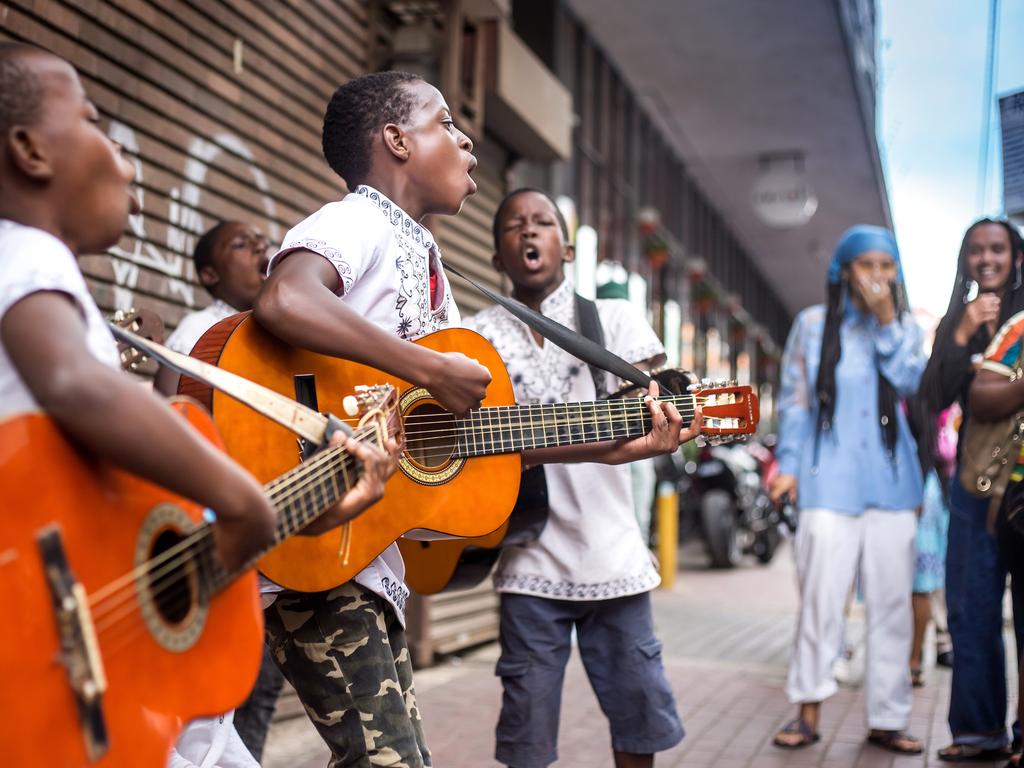
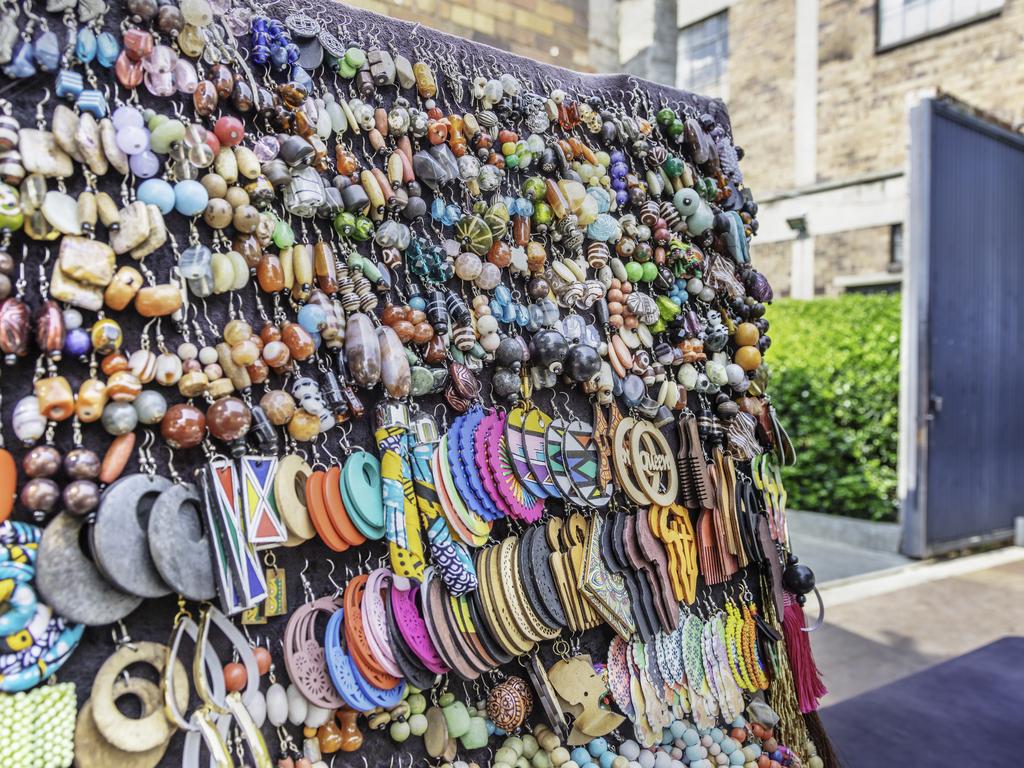
By 2010, Mr Skink said, Maboneng was being listed among Johannesburg’s “must visit” tourism spots.
“Restaurants began to open on Fox Street,” he said. “Some are still open and there are many new ones still opening. That’s what kept locals and visitors coming back.”
news.com.au visited Maboneng on a recent sunny Sunday, when Fox Street was buzzing with markets stalls, street artists touched up their latest masterpieces on old brick walls, and stylish retail workers chatted between sales outside their designer boutiques.
Inside Arts on Main, where former warehouse spaces now host artisanal markets and street food pop-ups, the main courtyard was packed with Joburgers and visitors eating and drinking in the afternoon sun.
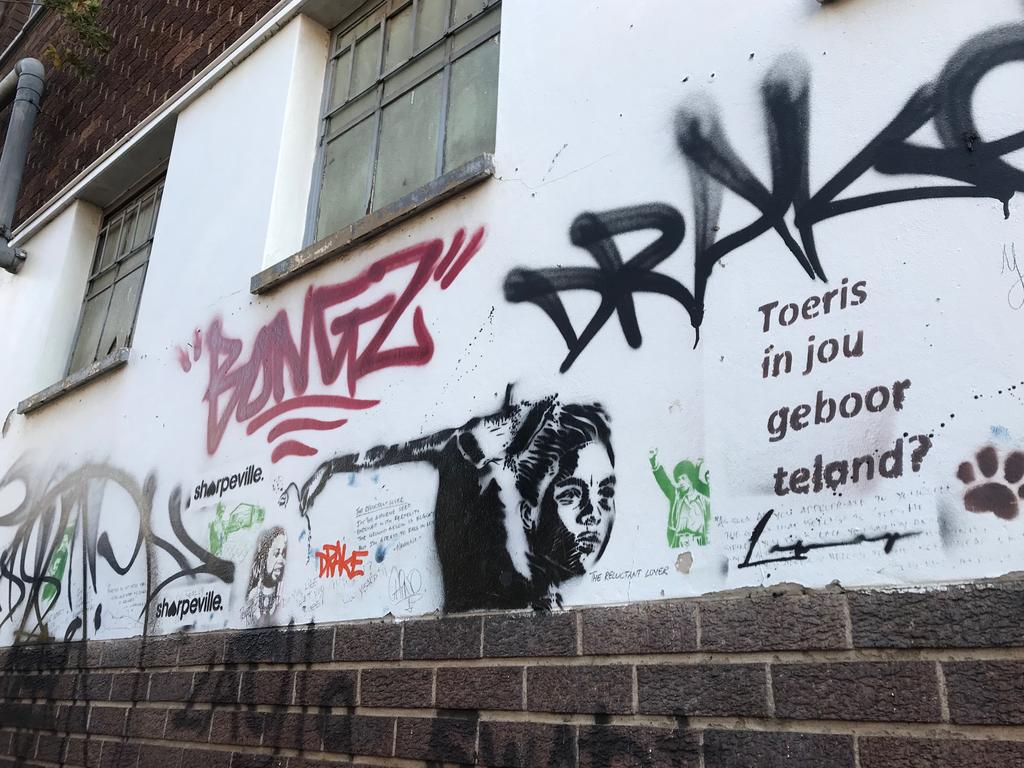
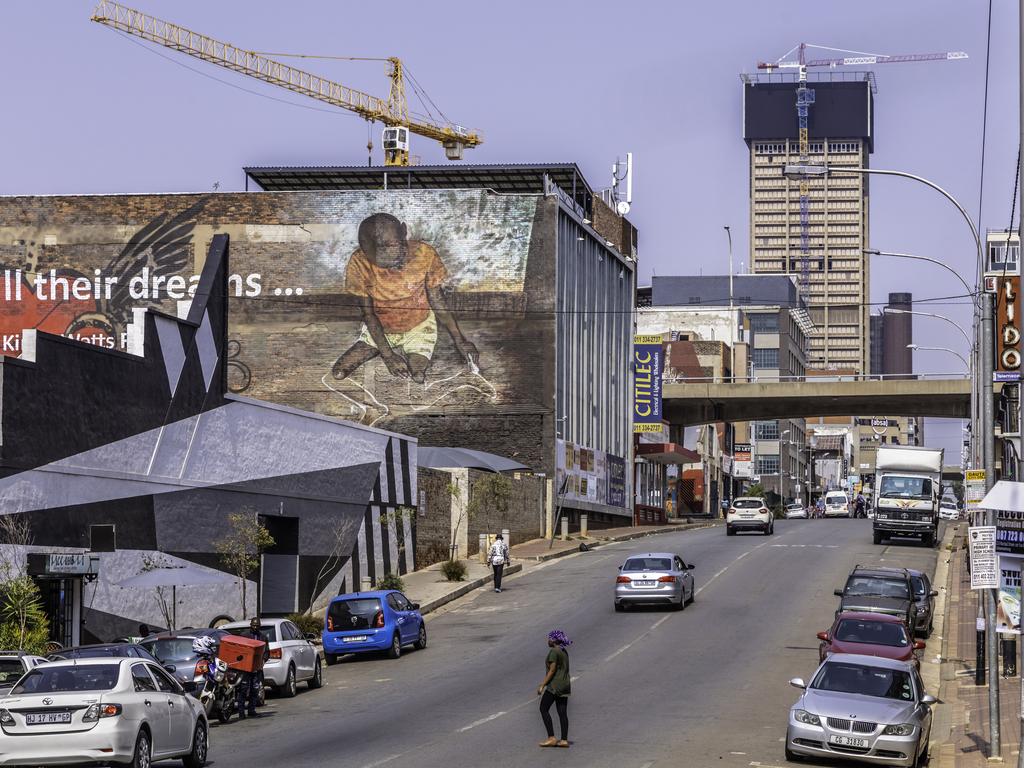
Far from its former notoriety, Fox Street felt safe — and it is, Mr Skink said, as he guided us around the neighbourhood. He described the precinct as being like “a gated community, but without the gates”.
“Private security keeps it safe,” he later explained.
“When I was living in Maboneng, that was the one thing that gave me peace of mind.
“I hardly ever locked my apartment when I left for work or went anywhere for the day. I knew my neighbours and I knew nothing bad could happen to my things while I was away. I also had a couple of kittens so I wouldn’t have liked to lock them up.”

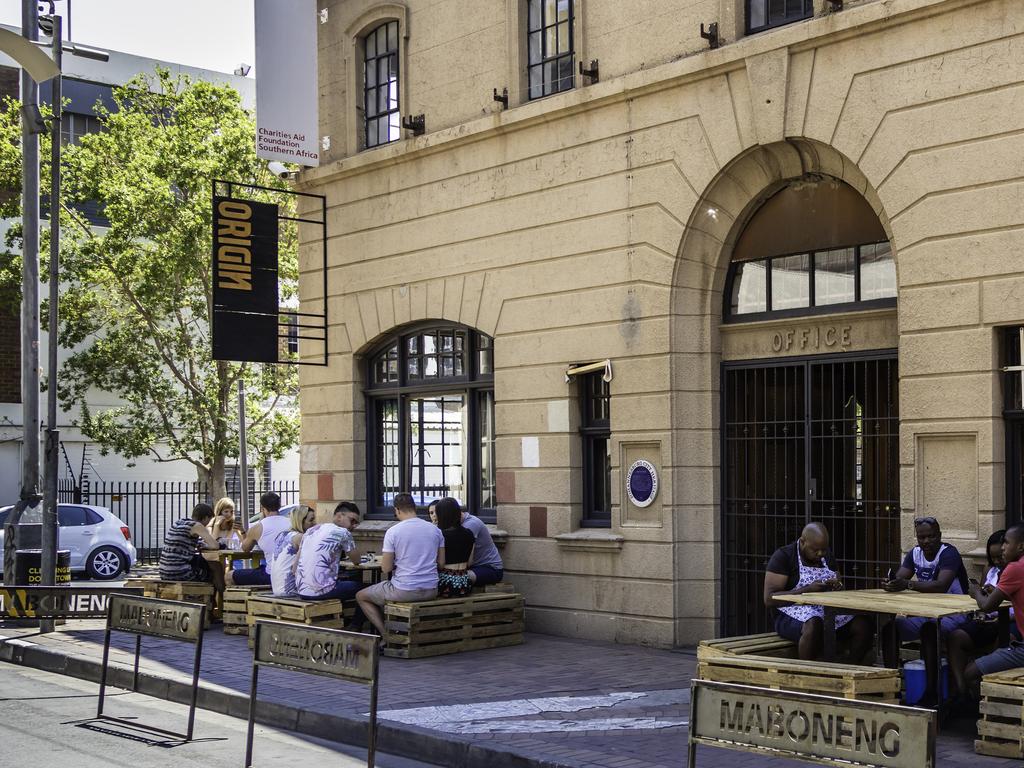
Art has been an important part of Maboneng’s success and popularity. Artists, commissioned by the precinct’s developers, have transformed its streets into outdoor art galleries. A doorway on Fox Street has become the canvass for stencil graffiti of famous faces, from local heroes like Nelson Mandela and luminaries like Nina Simone to provocative figures like former Libyan dictator Muammar Gaddafi.
“Art has become synonymous with Maboneng. It’s not something that has taken off like hotcakes but a few people have persevered and today run successful art businesses,” Mr Skink said.
One not-so-subtle piece of public art is a laneway crowded with the tall, metal 2D likenesses of Jonathan Liebmann and members of his entire family.


Propertuity went into liquidation late last year, citing severe cash shortages, and 18 of its Maboneng properties were put to auction. Local community leaders have said the company’s financial problems were unlikely to hinder the future of the precinct.
Whatever happens, perhaps the company’s work here is already done — Maboneng has firmed itself as an oasis of creativity, local industry and tourism in a city that’s evolving past notoriety. Those seeds have already been sown in what had long been a barren urban jungle.
“I like that Maboneng has become more like a community,” Mr Skink said.
“When I was living there, residents mostly stayed indoors, far from the maddening crowds only to emerge from our apartments on a Monday, when all the revellers had left.
“Nowadays, residents can be seen socialising with everybody else and I think this is more sustainable for the local businesses.”
The writer travelled to Maboneng as a guest of South Africa Tourism.



